#judge sewall
Explore tagged Tumblr posts
Text
Exactly that would have been better.
Imagine, if you will, a hot New England summer in the year 1702. It’s August in Massachusetts, and the humidity is oppressive. You’re a subsistence farmer in the small agricultural town of Wenham, on the post road between Newbury and Boston. It’s time to harvest the flax, and the sun is blazing down on your field, blazing down on you. It’s far too hot today to take on work this hard, but it must be done. From flax comes linen, a valuable textile.
As you begin to pull the flax under the unyielding heat of the sun you think, “No one’s around. What if I just shimmy out of these clothes? Who is to see? Who is to care?”
And so you do. You are alone.
Time grinds by, the sun grows higher, you bend low, you pull flax. You sweat, your naked limbs ache, you bend low, you pull flax. Your muscles burn, your hands bleed, you bend low, you pull flax.
After a good while you pause in your labors, stretch up to your full height to relieve the unbearable strain on your back and directly in front of you, you see:
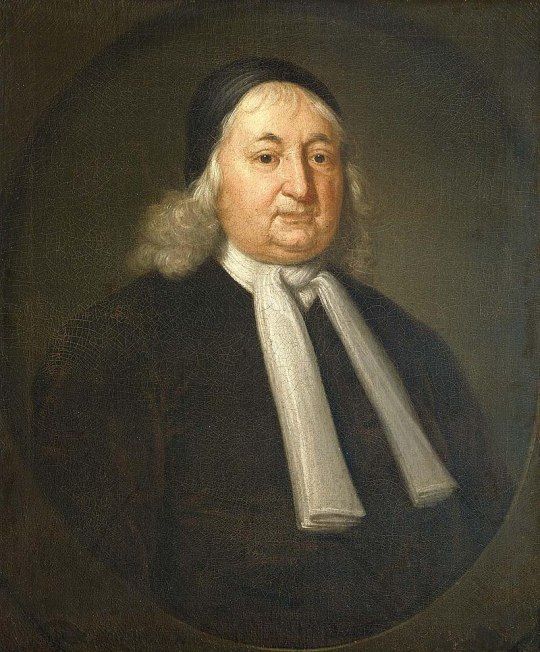
You start, and he stares at you, agog, from atop his horse.
It all takes a moment to register, and perhaps you’re a bit dazzled by the sun, but then the sickening drop in your stomach confirms that you know this man. It is Judge Samuel Sewall of Salem, of witchcraft trials fame. He is a frequent guest of your pastor in Wenham, Reverend Gerrish. And his face is quickly turning a garish, arterial shade of crimson.
You look down. You are utterly naked, covered in flax stalks and dirt. You feel an errant bead of sweat travel slowly down your shirtless chest and lodge in the muddy cup of your uncovered navel.
“Goddamn it,” you mutter, and the flushing judge, apoplectic, opens his mouth to speak.
(At least, that’s how I imagine this entry in Judge Sewall’s diary from August 11th, 1702 came about:)

(Diary of Samuel Sewall 1674-1729, Vol. 1, p. 61)
#can't blame david tbh#what's he supposed to do faint??#wenham#judge sewall#david simons#18th century#we have a pretty witty queue
5K notes
·
View notes
Text
As early as 1700, Samuel Sewall, the renowned Boston judge and diarist, connected “the two most dominant moral questions of that moment: the rapid rise of the slave trade and the support of global piracy” in many American colonies [...]. In the course of the eighteenth century, [...] [there was a] semantic shift in the [literary] trope of piracy in the Atlantic context, turning its [...] connotations from exploration and adventure to slavery and exploitation. [...] [A] large share of Atlantic seafaring took place in the service of the circum-Atlantic slave trade, serving European empire-building in the Americas. [...] Ships have been cast as important sites of struggle and as symbols of escape in [...] Black Atlantic consciousness, from Olaudah Equiano’s Interesting Narrative (1789) and Richard Hildreth’s The Slave: or Memoir of Archy Moore (1836 [...]) to nineteenth century Atlantic abolitionist literature such as Frederick Douglass’s My Bondage and My Freedom (1855) or Martin Delany’s Blake (1859-1862). [...] Black and white abolitionists across the Atlantic world were imagining a different social order revolving around issues of resistance, liberty, (human) property, and (il)legality [...].
---
Using black pirates as figures of resistance [...], Maxwell Philip’s novel Emmanuel Appadocca (1854) emphasizes the nexus of insatiable material desire and its conditions of production: slavery. [...] [T]he consumption of commodities produced by slave labor itself was delegitimized [...]. Philip, a Trinidadian [and "illegitimate" "colored" child] [...], published Emmanuel Appadocca as a protest against slavery in the United States [following the Fugitive Slave laws of 1850.]. [...] [The novel places] at its center [...] a heroic non-white pirate and intellectual [...] [whose] pirate ship [...] [is] significantly named The Black Schooner [...]. One of the central discourses in [the book] is that of legitimacy, of rights and lawfulness, of both slavery and piracy [...]. About midway into the book, Appadocca gives a [...] speech in which he argues that colonialism itself is a piratical system:
If I am guilty of piracy, you, too [are] [...] guilty of the very same crime. ... [T]he whole of the civilized world turns, exists, and grows enormous on the licensed system of robbing and thieving, which you seem to criminate so much ... The people which a convenient position ... first consolidated, developed, and enriched, ... sends forth its numerous and powerful ships to scour the seas, the penetrate into unknown regions, where discovering new and rich countries, they, in the name of civilization, first open an intercourse with the peaceful and contented inhabitants, next contrive to provoke a quarrel, which always terminates in a war that leaves them the conquerors and possessors of the land. ... [T]he straggling [...] portions of a certain race [...] are chosen. The coasts of the country on which nature has placed them, are immediately lined with ships of acquisitive voyagers, who kidnap and tear them away [...].
In this [...], slavery appears as a direct consequence of the colonial venture encompassing the entire “civilized world,” and “powerful ships” - the narrator refers to the slavers here - are this world’s empire builders. [...] Piracy, for Philip, signifies a just rebellion, a private, legitimate [resistance] against colonial exploiters and economic inequality - he repeatedly invokes their solidarity as misfortunate outcasts [...].
---
All text above by: Alexandra Ganser. “Cultural Constructions of Piracy During the Crisis Over Slavery.” A chapter from Crisis and Legitimacy in the Atlantic American Narratives of Piracy: 1678-1865. Published 2020. [Bold emphasis and some paragraph breaks/contractions added by me.]
#abolition#its first of february#caribbean#maxwell philip was trinidadian#tidalectics#archipelagic thinking
66 notes
·
View notes
Text
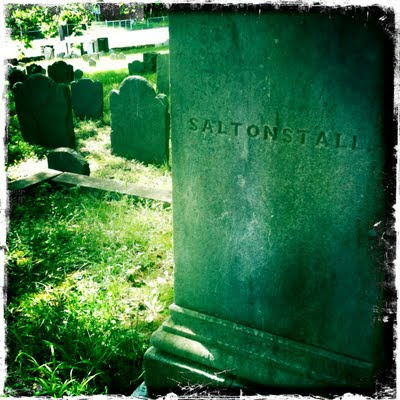
Nathaniel Saltonstall, Salem Witch Trials Judge
The most impressive monument belongs to the family of Nathaniel Saltonstall, who was one of the judges at the Salem witchcraft trials in the 1690s.
Saltonstall was born in Ipswich in 1639, attended Harvard, and eventually became Haverhill’s town clerk. He married Elizabeth Ward, who was the daughter of John Ward, the minister who founded Haverhill. In short, he was kind of a bigwig.
When the 1692 witch craze broke out in Salem Village, Saltonstall was appointed to the Court Oyer and Terminer, a group of seven judges who would oversee the witchcraft trials.

Saltonstall only heard one witchcraft case, that of Bridget Bishop, who was found guilty and hanged on Gallows Hill. After this, he removed himself from the Court Oyer and Terminer. Salem was far from his home in Haverhill, but more importantly he didn’t believe the afflicted girls were really possessed, and found the spectral evidence admitted in court unconvincing.
It wasn’t so easy for him to escape the Salem madness unscathed, though. When he returned to Haverhill he started to drink heavily, and was reprimanded for it by Samuel Sewall, one of the judges who remained on the court. Even worse, the afflicted Salem Village girls claimed they saw Nathaniel Saltonstall’s spectre with the other witches, and that he was a witch himself.
Because he was well-connected Saltonstall was never brought to trial. He weathered the witch craze, and eventually died in 1707. I don’t know if he stopped drinking.
#ghost and hauntings#paranormal#ghost and spirits#haunted locations#haunted salem#myhauntedsalem#salem massachusetts#paranormal phenomena#salem witch trials#Nathaniel Saltonstall
3 notes
·
View notes
Text
Not Judge Sewall writing an entire NOVEL apologizing to the victims of the Salem Witch Trials and Rev. Samuel Parris just going “I may have been mistaken…”
3 notes
·
View notes
Text

Dorothy Sledge, BJU Class of 1947 died at Brookridge Retirement Community in Winston-Salem, NC, on March 17, 2024. She was 101 years old. She is survived by her beloved husband of over 74 years, Randall Dothan Sledge of the home, three children and their spouses, Jonathan Edward Sledge (Deborah Norton) of Raleigh, NC; Richard William Sledge (Molly Sledge) of Ft. Collins, CO; and Martha Lee Sledge (Steven Hornsby), of New York, NY; 9 grandchildren; 13 great-grandchildren; her brothers and their spouses, Edward Reeves Sewall (Barbara Overton Sewall) and Robert Winslow Sewall (Marlys Pearson Sewall); numerous nieces and nephews; and countless friends and colleagues.
She is preceded in death by an infant son, Timothy Randall Sledge; her parents, Edward Bradstreet Sewall and Lorena Reeves Sewall; and her sister, Mary Ida Sewall Finnie. Dorothy Sewall was born on August 5, 1922, in Minneapolis, MN, to Edward Bradstreet Sewall and Lorena Reeves Sewall, the second of four children. She shared the challenges of growing up during the Great Depression, moving several times during those years between Minneapolis and St. Paul, but in describing her childhood, she focused on fond memories: family trips to several of Minnesota’s 10,000 lakes, including a lake trip for her 5th birthday for which her mother made a carousel birthday cake; Christmases with 3 of her aunts who lived together in St. Paul; dinners cooked by her maternal grandmother who lived with them; attending school through Grade 8 in a one-room school with a teacher (Miss Chase) whom she adored. She graduated high school from Minnehaha Academy in 1939, and then worked in the family business, Sewall Gear Manufacturing. She enrolled in Bob Jones University (then in Cleveland, TN), graduating in 1947 with a degree in Speech. While there she met Randall Dothan Sledge.
Their courtship began in the college dining hall. Upper-level female students were assigned as hostess to a dining table where the students ate family style, the rest of the students rotating every few weeks. Randall rotated to sit at the dining table where Dorothy was the hostess, and being the good hostess, she remained at the table conversing with everyone as the other students finished eating and left. Randall was typically the last student at the table: slow eater or already entranced? You be the judge. After a few months getting to know each other in person and two years of long-distance epistolary courtship with a few visits sprinkled in, she and Randall married on August 12, 1949, in St. Paul, Minnesota, on what everyone remembers as a blistering hot summer day for Minnesota.
And so they began their partnership in life and ministry. It is hard to talk about Dorothy without talking about Randall, as their love bonded them closely, but I hope you can get a sense of her here. Dorothy graduated from New Orleans Theological Seminary with a Masters in Religious Education in 1950, and with Randall began their ministry partnership. While Randall finished his Doctor of Theology degree and pastored churches, she bore and lost their first child and started her work as “the wife of the pastor” (a full-time job in those days, though unpaid), in south Louisiana churches in Iowa and Meringouin. She was a long way geographically and culturally from Minnesota. The couple began a peripatetic era, alternating between national and international living and work. While in Spanish Language school in Costa Rica, they added their son Jonathan to the family. Then through the International Mission Board (IMB) of the Southern Baptist Convention, they worked together in Peru and added their son Richard to the family. After four years in Peru, they returned to Louisiana, added their daughter Martha to the family, and Dorothy served again as the “pastor’s wife” in Shreveport, and Winnsboro, Louisiana, and was a leader in the Louisiana Women’s Missionary Union (WMU).
She was well-known around the state for her skits and character sketches that she wrote to accompany her presentations. A simple prop such as a hat or scarf could turn her into a completely different person. After their children were “flown and grown,” they returned to mission work through the International Mission Board, this time in Colombia, where Dorothy taught public speaking at the Baptist Seminary in Cali for 10 years. They loved their missionary families in both Peru and Colombia and developed life-long friendships, praying daily for everyone they had known by name, every morning. At retirement, most people seek a quiet life and settle down. Not Dorothy and Randall. During the first part of their retirement, they were based in Shreveport, Louisiana, where Dorothy regularly taught Sunday School, led in the WMU again, and spoke publicly around the state about their work overseas; she and Randall also volunteered in short-term positions with the IMB back in Colombia and in war-torn Bosnia. In addition to the travel for work, they also travelled extensively for pleasure: they finished off their 50-state checklist with a trip to Hawaii for their 50th wedding anniversary, and traveled in the Middle East, Europe, Scandinavia, Canada, and Mexico. Dorothy and Randall moved to Brookridge Retirement Community, Winston-Salem, North Carolina, in 2009, to live for their remaining years. They still travelled to see family and friends, welcoming grandchildren and great grandchildren with glee. Dorothy loved visiting with friends and family. COVID alone stopped their footloose traveling, though they still enjoyed shorter trips to the North Carolina mountains.
#Bob Jones University#BJU Obituary#BJU Hall of Fame#BJU Alumni Association#Bob Jones College#Dorothy Sewall Sledge#Class of 1947
1 note
·
View note
Link
1 note
·
View note
Photo
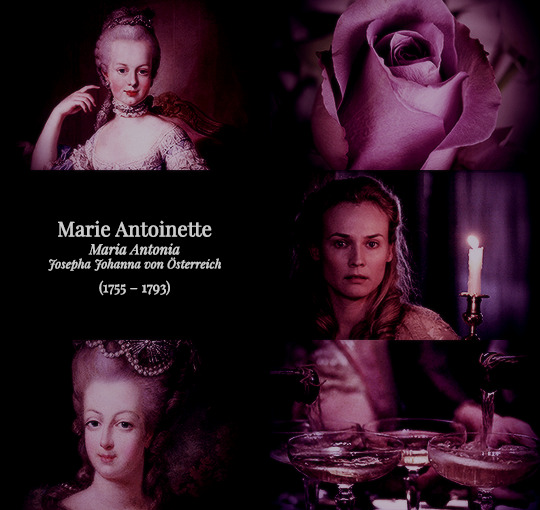



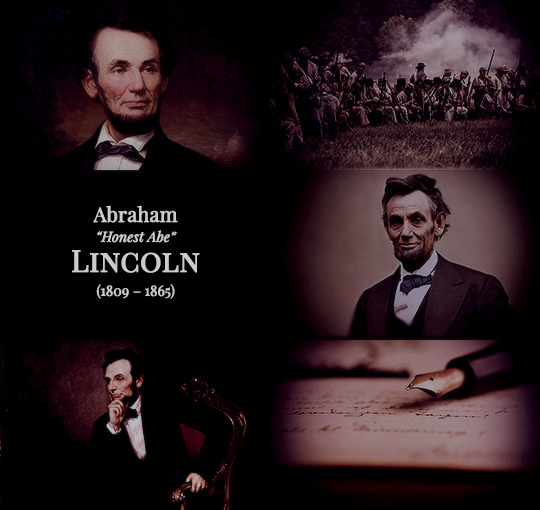
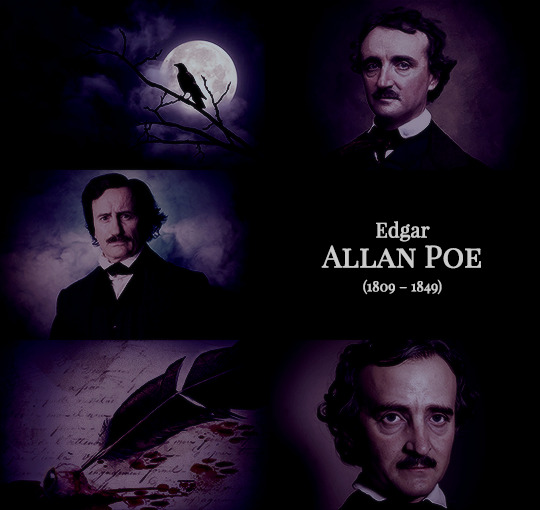
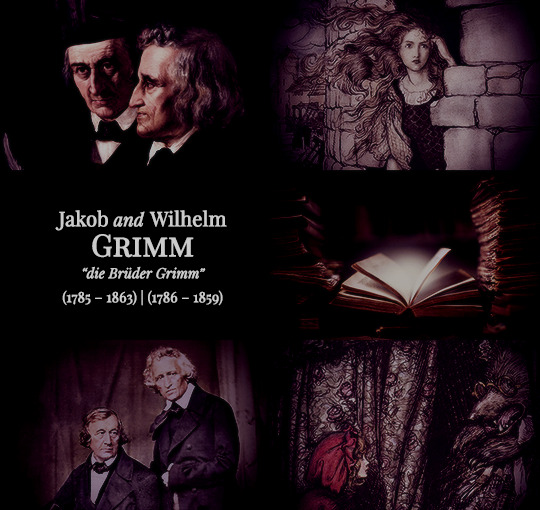



Nancy Drew Posthumous Characters || Real Historical Figures
Marie Antoinette My specialty is Marie Antoinette. Poor Marie. The most misunderstood queen of the 18th century. Marie used to visit the very tower that now belongs to this castle. I’m convinced that this place holds evidence that will forever change the way the world views Marie.
Harry Houdini Did you ever hear about a challenge that J.J. Thompson issued to Harry Houdini back in 1925? J.J. put up a big reward for this Houdini challenge. He must’ve thought the escape was impossible. But Houdini did it and J.J. didn’t have the reward money. From what I can tell, J.J had to give Harry Houdini fifty percent of the theater as the reward.
Pacal This is one of the museum’s most treasured pieces, a carving of King Pacal. Pacal assumed the throne at the age of twelve — can you imagine? That was 615 AD. He ruled for 68 years, at the height of the Maya civilization.
Oliver Cromwell Oliver Cromwell? Ironsides? Hmph. I supposed they don’t teach history any longer in the US. Lady Penvellyn was a rather vocal critics of Cromwell’s policies and helped many of his enemies flee the country.
Abraham Lincoln See, what I didn’t tell you when I gave you that letter that Jake wrote to Ruth is that I also found his diary. Which is how I found out that he’d gotten to be friends with President Lincoln and that he’d gotten a letter from Abe that he knew would be so valuable someday that he always kept it on his person.
Edgar Allan Poe “Is that an old manuscript?”
“By Edgar Allan Poe. Never published. He told her where it was when he was on his death bed. When he died, she took it and run off so Rufus Griswold wouldn’t end up with it. At least, that’s I think that’s what happened.”
Brothers Grimm It was here at university where the brothers’ interest in collecting folk and fairy tales was first piqued. While traveling in France as a research assistant for one of the professors, Jakob became fascinated by a German manuscript of old stories he had found. Interested in keeping the tales and the culture alive, Jakob and Wilhelm began their search for other such tales. The brothers solicited help from their friends, as well as trips to the surrounding countryside, in order to obtain as many tales as possible. A large majority of the tales came from female acquaintances, such as Dorothea Wild and the Hassenpflug sisters, Amalie and Jeanette.
Nefertari “Ah, a love story. Break out the tissue papyrus, because when I’m done there won’t be a dry Horus in the house. Look it up, dear. Ramses II and Nefertari shared a love so cast the world could scarcely contain it. I’m talking about the kind of love you spell capital L, capital O, heart instead of a V, capital E. They stood side by side and ruled the world. But as they saw the years stretch out before them, they were keenly aware that a handful of decades would never cut it. They needed to be together, always.”
“That’s … sweet.”
“And relevant. The ancient Egyptians believed that life was little more than a dress rehearsal for eternity.”
Nikola Tesla Nikola Tesla was a genius, visionary, and inventor who left an indelible mark on the world. With 700 patents to his name, Tesla broke new ground in research and design to usher in a second industrial revolution. Many of today’s technologies are based on Tesla’s designs.
John Hathorne You stand before the remains of Salem’s most zealous, and conniving judge. So lacking in morals was Judge Hathorne, that he sentenced innocents to death while claiming the estates of the dead as his own. Unlike the remorseful Judge Sewall, Hathorne never felt any guilt for his part in the Salem witch trials.
#historyedit#history#nancy drew#video games#nancy drew pc#nanshe's graphics#from what i've studied john hathorne actually was the massive tool midnight in salem makes him out to be
52 notes
·
View notes
Photo




Nobody told me Jonathan Sewall in the HBO series be lookin like a SNACK
In 1759 Sewall became a very close friend and patron of John Adams, the future second President of the United States. At the urging of Governor Francis Bernard, Sewall offered Adams the position of Advocate General in the Admiralty Court. Adams declined. A devout Loyalist, Sewall took his family to England in 1775 after a mob stormed his family home in Cambridge (he was subsequently named in the Massachusetts Banishment Act of 1778). While in England, he changed the spelling of the family name to Sewell. Adams, in his diary, grieved that his best friend in the world had become his implacable enemy. While Adams was assigned to London as a U.S. minister to the Court of St. James's in 1785, he looked up his old friend and they had a two-hour meeting. Both men were entrenched in their own ideas and no reconciliation was possible; Adams considered Sewall a casualty of the war.
Sewall later served as a judge in the Vice Admiralty Court of Nova Scotia. He died in Saint John, New Brunswick in 1796.
4 notes
·
View notes
Text
Fun fact I learned while researching for a story: Louisa May Alcott (Little Women) is the great granddaughter of one of the Salem Witch Trial judges, Samuel Sewall.
10 notes
·
View notes
Text
Okay I really need to do a full a analysis of the 'puzzle list' bullshittery on HeR's post-MID survey. Let's look at them all individually.
- Open Judge Sewall's desk: this can barely be considered a puzzle. It takes 3 seconds and you don't have to put any thought into it.
- Arrange torn letter: this is a puzzle.
- Pumpkin carving and placement: this is, in no way shape or form, a puzzle. This is a minigame
- Lock-picking judge's door: I'll accept this as a puzzle
- Johnny Cakes: the replayable cooking process is a minigame, not a puzzle, but I'll let this one slide bc of the ingredient measuring and 'Egg?'
- Compare evidence: is it really a puzzle if you’re able to mindlessly force-click your way through it?
- CCTV footage review: this is a puzzle
- Witch tour: to call this a 'puzzle' is a bit of a stretch
- Flyer match: is this referring to the ripped paper from the scarecrow? I mean, yeah it’s clearly from Olivia's flyers, but even when you hold the torn one up to the matching flyer in Olivia’s shop Nancy doesn't confirm anything. So how is it a puzzle if it’s not canonically acknowledged (correct me if I'm wrong or if I somehow skipped Nancy's commentary)?
- Herb mixing: I consider this a minigame, not a puzzle.
- Truth serum mix and gifting: I didn't do this on my playthrough and a lot of ppl dont even know it's a Thing, soooooo. It's also, more or less, the same thing as the herb mixing.
- Exploring Hathorne House: exploration, in 99% of cases, is not a puzzle. Although I suppose they’re referring to the mirror-desk thing, in which case, I guess I’ll let it slide (even though I still don’t think it’s much of a puzzle).
- Ghost hunt (equipment): this is a puzzle
- Find fakery in the forest: once again, exploration is not a puzzle
- Cipher wheel: this is a puzzle
- Water works map and find ergot source: this isn’t what I would typically call a ‘puzzle’ but I’ll accept it
- Tunnel navigation: I suppose this is a puzzle
- Block: ?block? the hexagonal key-thing, I guess? that’s a puzzle
- WOTY: ?????? (is this supposed to be about the escape room w/ Mei and pulling the brick out of the wall??? that’s kind of a puzzle)
- Press house buttons: oh wait if this refers to the 3D dollhouse setup then WOTY must be the big constellation/calendar ring puzzle omg, what does WOTY mean?? Lolol. Umm anyway the constellation ring is def a puzzle, but the dollhouse thing is not bc it requires no thought
- Apothecary’s chest: this is a puzzle. not a hard one, but a puzzle nonetheless
- Angel Wing puzzle: this is a puzzle.
Feel free to add on with any corrections or your own thoughts
53 notes
·
View notes
Photo

My brother @eupocalyptus told me a fascinating thing the other day: today is Justice Samuel Sewall’s (the judge from the Salem witch trials) appointed day of humiliation and repentance. After the trials, aided by friends in his community, Sewall underwent a huge change of conscience and wound up begging forgiveness from ‘God and all people’ for what he acknowledged as his crime in the trials. He set up this day, April 29th as a day of personal repentance and apology. He even went on to publish an early and important antislavery paper later in life. I’m not a religious person, but I love that - it’s a powerful thing to apologize. As someone who has made several paintings of complex—and usually monstrous—mythic figures, I was really inspired by this story. Seen here: ‘Icarus,’ ‘Mortal Sister,’ ‘Gifts for Skylla,’ and ‘Tsuru Nyobo’ . . . . #artistsoninstagram #mythology #oilpainting #salem #illustration #fineart #salemwitchtrials https://www.instagram.com/p/B_knIAZjrrt/?igshid=1kyfxah9tbf9y
11 notes
·
View notes
Text
As early as 1700, Samuel Sewall, the renowned Boston judge and diarist, connected “the two most dominant moral questions of that moment: the rapid rise of the slave trade and the support of global piracy” in many American colonies [...]. In the course of the eighteenth century, three textual moments prepared the grounds for a major semantic shift in the trope of piracy in the Atlantic context, turning its primary connotations from exploration and adventure to slavery and exploitation. [...]
[A] large share of Atlantic seafaring took place in the service of the circum-Atlantic slave trade, serving European empire-building in the Americas.[...] [S]hips also became a popular literary topos for writers critiquing slavery. Ships have been cast as important sites of struggle and as symbols of escape in the context of a fledgling Black Atlantic consciousness, from Olaudah Equiano’s Interesting Narrative (1789) and Richard Hildreth’s The Slave: or Memoir of Archy Moore (1836 [...]) to nineteenth century Atlantic abolitionist literature such as Frederick Douglass’s My Bondage and My Freedom (1855) or Martin Delany’s Blake (1859-1862). [...] Black and white abolitionists across the Atlantic world were imagining a different social order revolving around issues of resistance, liberty, (human) property, and (il)legality [...]. In the Black Atlantic context, the ocean, like the ship, similarly functions as an ambivalent, heterotopic site, “a trope marking the unruly space between the past memory [...] and the present reality of slavery in terms of active resistance” [...]. Furthermore, the moving ship, as a symbol, represents “the moving to and fro between nations, crossing borders” [...].
---
During the slavery crisis of the mid-nineteenth century, piracy signified the criticality of legitimacy in the context of Black Atlantic literature.
Black Atlantic narratives responded to the crisis and voiced a critique of the triangular trade by turning the trope of the pirate as a figure of excessive consumption on its head. Using black pirates as figures of resistance to an exploitative system of enslavement and to the spectacle of colonial commodities, Maxwell Philip’s novel Emmanuel Appadocca (1854) emphasizes the nexus of insatiable material desire and its conditions of production: slavery. In addition, Black Atlantic narratives of piracy also turn upside down the traditional definition of the pirate as renouncing all ties and laws of nature [...]. [B]y appropriating claims to natural law as incompatible with a slave-based system, the pirate, paradoxically, becomes the outlaw defendant of laws of nature as opposed to legal law. [...] [T]he consumption of commodities produced by slave labor itself was delegitimized [...],.
In Emmanuel Appadocca, piracy is presented as a result of disenfranchisement on the one hand and as a source of empowerment and strength in the struggle against inequality and injustice - particularly against slavery and its consequences - on the other. In the novel, the pirate ship enacts a different sort of “imagined community” (Anderson {1983] 2006) than that of the nation-state, which excluded various groups of people due to its racist and classist colonial structures. [...]
One of the central discourses in Emmanuel Appadocca is that of legitimacy, of rights and lawfulness, of both slavery and piracy, focusing on the natural right to resistance [...]. About midway into the book, Appadocca gives a powerful speech in which he argues that colonialism itself is a piratical system:
If I am guilty of piracy, you, too [...]. [T]he whole of the civilized world turns, exists, and grows enormous on the licensed system of robbing and thieving [...]. The people which a convenient position ... first consolidated, developed, and enriched, ... sends forth its numerous and powerful ships to scour the seas, the penetrate into unknown regions, where discovering new and rich countries, they, in the name of civilization, first open an intercourse with the peaceful and contented inhabitants, next contrive to provoke a quarrel, which always terminates in a war that leaves them the conquerors and possessors of the land. ... [T]he straggling [...] portions of a certain race [...] are chosen. The coasts of the country on which nature has placed them, are immediately lined with ships of acquisitive voyagers, who kidnap and tear them away [...].
In this [...] analysis, slavery appears as a direct consequence of the colonial venture encompassing the entire “civilized world,” and “powerful ships” - the narrator refers to the slavers here - are this world’s empire builders. [...]
---
The alleged violence of the Caribbean pirates [...] is of special significance in the context of the text’s discursive appropriation of piracy as a means of heterotopic resistance. [...] Moving from the Caribbean background toward the ocean in its setting, Philip’s novel inverts the significance of this Atlantic motif through the association of piracy with a rough [...] Robin Hood principle [...] by redistributing the wealth of the colonies. Piracy, for Philip, signifies a just rebellion, a private, legitimate war against colonial exploiters and economic inequality - he repeatedly invokes their solidarity as misfortunate outcasts [...]. That the pirate’s mobile, temporary home has to remain beyond the Caribbean shores is both evidence of an emergent counter-modernity informed by the Black Atlantic and the tragedy of Philip’s text. In the nineteenth century, the heterotope of the pirate ship thus helped Black Atlantic literature like Philip’s to give voice to subaltern subject positions and allowed for a discursive questioning of the dominant order, even though the design of a ‘more perfect’ place from the perspective of the oppressed remains unstable.
---
All text above by: Alexandra Ganser. “Cultural Constructions of Piracy During the Crisis Over Slavery.” A chapter from Crisis and Legitimacy in the Atlantic American Narratives of Piracy: 1678-1865. Published 2020. [Bold emphasis and some paragraph breaks/contractions added by me.]
85 notes
·
View notes
Photo

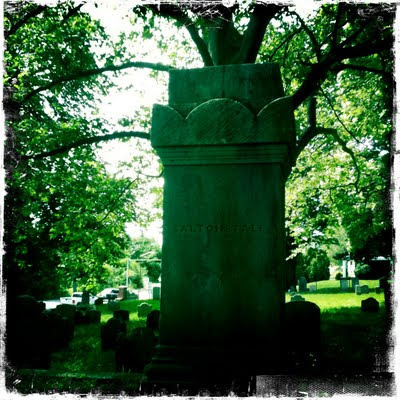
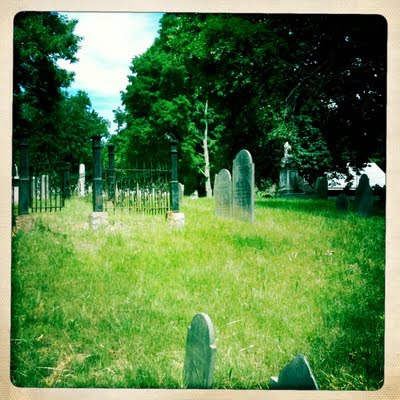
Nathaniel Saltonstall, Salem Witch Trials Judge
The most impressive monument belongs to the family of Nathaniel Saltonstall, who was one of the judges at the Salem witchcraft trials in the 1690s.
Saltonstall was born in Ipswich in 1639, attended Harvard, and eventually became Haverhill’s town clerk. He married Elizabeth Ward, who was the daughter of John Ward, the minister who founded Haverhill. In short, he was kind of a bigwig.
When the 1692 witch craze broke out in Salem Village, Saltonstall was appointed to the Court Oyer and Terminer, a group of seven judges who would oversee the witchcraft trials.
Saltonstall only heard one witchcraft case, that of Bridget Bishop, who was found guilty and hanged on Gallows Hill. After this, he removed himself from the Court Oyer and Terminer. Salem was far from his home in Haverhill, but more importantly he didn’t believe the afflicted girls were really possessed, and found the spectral evidence admitted in court unconvincing.
It wasn’t so easy for him to escape the Salem madness unscathed, though. When he returned to Haverhill he started to drink heavily, and was reprimanded for it by Samuel Sewall, one of the judges who remained on the court. Even worse, the afflicted Salem Village girls claimed they saw Nathaniel Saltonstall’s spectre with the other witches, and that he was a witch himself.
Because he was well-connected Saltonstall was never brought to trial. He weathered the witch craze, and eventually died in 1707. I don’t know if he stopped drinking.
#Nathaniel Saltonstall Salem Witch Trials Judge#salem witch trial#salem#massachusetts#paranormal#ghost and hauntings#ghost and spirits#haunted locations#haunted cemeteries#haunted Salem#myhauntedsalem
8 notes
·
View notes
Text
Law Center Asks Supreme Court To Decide How Far Schools Can Promote Islam And Disparage Christianity
Maryland school fails Christian student for refusing Islamic prayer

The declarations could have been made by an imam in a mosque sermon.
“Most Muslims’ faith is stronger than the average Christian.”
“Islam at heart is a peaceful religion.”
Jihad is a “personal struggle in devotion to Islam, especially involving spiritual discipline.”
“To Muslims, Allah is the same God that is worshiped in Christianity and Judaism.”
“Men are the managers of the affairs of women” and “Righteous women are therefore obedient.”
The problem is that those statements were part of the instruction in a public school in Maryland, and one of the students in the classroom now is asking the U.S. Supreme Court to condemn such religious lessons funded by taxpayers.
The Thomas More Law Center has submitted a petition asking the high court to take up the case of student Caleigh Wood.
“As a Christian and 11th-grader at La Plata High School in Maryland, Caleigh Wood was taught that ‘Most Muslims’ faith is stronger than the average Christian.’ She was also required to profess in writing, the Islamic conversion creed, ‘There is no god but Allah, and Muhammad is the messenger of Allah.’ Ms. Wood believed that it is a sin to profess by word or in writing, that there is any other god except the Christian God. She stood firm in her Christian beliefs and was punished for it. The school refused her request to opt-out or give her an alternative assignment. She refused to complete her anti-Christian assignment and consequently received a failing grade,” the legal team explained Wednesday.
Lower courts have given a free pass to the school district to teach Islam, and so TMLC filed the request with the Supreme Court to decide “whether any legal basis exists to allow public schools to discriminate against Christianity while at the same time promote Islam.”
“Under the guise of teaching history or social studies, public schools across America are promoting the religion of Islam in ways that would never be tolerated for Christianity or any other religion,” said Richard Thompson, TMLC’s president.
“I’m not aware of any school which has forced a Muslim student to write the Lord’s Prayer or John 3:16: ‘For God so loved the world, that he gave his only begotten Son, that whosoever believeth in him should not perish, but have everlasting life,'” he said.
“Many public schools have become a hot bed of Islamic propaganda. Teaching Islam in schools has gone far beyond a basic history lesson. Prompted by zealous Islamic activism and emboldened by confusing court decisions, schools are now bending over backwards to promote Islam while at the same time denigrate Christianity. We are asking the Supreme Court to provide the necessary legal guidance to resolve the insidious discrimination against Christians in our public schools,” he said.
Unresolved include whether or not schools can make preferential statements about one religion over another, and whether students may be required to assert religious beliefs with which they disagree.
And how do those concepts align with “Congress shall make no law respecting an establishment of religion, or prohibiting the free exercise thereof”?
The Charles County public schools and officials are defendants.
The filing explains the lower courts, despite the First Amendment’s requirements, “upheld the ability for [the school] to denigrate Petitioner Caleigh Wood’s faith and require her to write out statements and prayers contradictory to her own religious beliefs.”
The lessons “taught Islamic principles as if they were true facts, while Christian principles were treated as mere beliefs,” the filing states.
For example, students were told the “Quran is the word of Allah” but Christians believe the Gospels were revealed to the New Testament writers.
Wood refused to write that the Muslim god is the only god, and was failed for her faith.
The lower courts discounted Wood’s religious convictions and gave the school the go-ahead.
But instances of mandatory faith training, such as orders to recount a Muslim prayer in contradiction to the student’s own beliefs, conflicts with Supreme Court precedent, the filing said.
WND has reported in just the past few weeks on a legal team that dispatched cease-and-desist letters to several Washington state school districts that were promoting Islam through a Ramadan policy of giving Muslim students special privileges.
One district ordered employees to greet Muslim students in Arabic.
But in recent months the resistance to Islam indoctrination has been growing.
One group that has fought it, the Freedom of Conscience Defense Fund, regularly has opposed Islamic teachings in public schools.
‘The true faith, Islam’
Among the cases that have developed:
In May 2017, in Groesbeck, Texas, a couple moved their sixth-grade daughter to a new school after they discovered her history homework assignment on Islam.
In late March 2017, as WND reported, a middle school in Chatham, New Jersey, was using a cartoon video to teach the Five Pillars of Islam to seventh-grade students, prompting two parents to obtain legal services to fight the school district, which has ignored their concerns.
Teaching the five pillars of Islam also created an uproar in Summerville, South Carolina, and in Loganville, Georgia, last year.
WND also reported in March 2017 a high school in Frisco, Texas, set up an Islamic prayer room specifically for Muslim students to pray on campus during school hours. The same type of prayer rooms have been set up in high schools in St. Cloud, Minnesota, and other school districts.
In 2015, parents in Tennessee asked the governor, legislature and state education department to investigate pro-Islam bias in textbooks and other materials.
WND reported in 2012 ACT for America conducted an analysis of 38 textbooks used in the sixth through 12th grades in public schools and found that since the 1990s, discussions of Islam are taking up more and more pages, while the space devoted to Judaism and Christianity has simultaneously decreased.
In 2009, Gilbert T. Sewall, director of the American Textbook Council, a group that reviews history books, told Fox News the texts were “whitewashing” Islamic extremism and key subjects such as jihad, Islamic law and the status of women.
Also in 2009, WND reported the middle school textbook “History Alive! The Medieval World and Beyond,” published by Teachers’ Curriculum Institute, said an Islamic “jihad” is an effort by Muslims to convince “others to take up worthy causes, such as funding medical research.”
In 2006, WND reported a school in Oregon taught Islam by having students study and learn Muslim prayers and dress as Muslims.
WND reported in 2003 a prominent Muslim leader who eventually was convicted on terror-related charges helped write the “Religious Expression in Public Schools” guidelines issued by President Bill Clinton.
In 2001, shortly after the 9/11 attacks, seventh graders in Byron, California, were taught a three-week course on Islam that required them to learn 25 Islamic terms, 20 proverbs, Islam’s Five Pillars of Faith, 10 key Islamic prophets and disciples, recite from the Quran, wear a robe during class, adopt a Muslim name and stage their own “holy war” in a dice game.
Parents went to court to uphold their right to reject the class for their children, but a federal judge ruled against them, and in 2006, the U.S. Supreme Court refused to consider their appeal.
-------------------------------------------------
More via Thomas More Law Center Asks Supreme Court To Decide How Far Schools Can Promote Islam And Disparage Christianity
Maryland: School bans USMC dad who requested daughter’s removal from Islamic indoctrination
59 notes
·
View notes
Photo


Witches In America: See Stunning Photos Of Modern Witchcraft Community
The seed of “Major Arcana: Witches in America” was planted six years ago while I was researching an earlier body of work that examined my family ancestry in New England. I discovered that my 10th great-grandfather presided as one of the central judges in the infamous Salem witch trials. Coincidentally, my eighth great-grandmother, a woman named Mary Bliss Parsons, had been tried for witchcraft in Northampton, Massachusetts, only a few decades prior.
Several years later, I was reminded of this strange ancestral coincidence while reading historian Stacy Schiff’s account of the Salem witch trials [The Witches: Suspicion, Betrayal, and Hysteria in 1692 Salem], in which my ancestor, Justice Samuel Sewall, plays a prominent role. I began thinking about the witch as an archetypal figure — one that has persistently captured imaginations (and haunted nightmares) for centuries. From the 17th century witch hunts in Europe, to the Salem trials, to the ways in which the witch seems to populate movies and television decade after decade (like The Wizard of Oz, Bewitched, Chilling Adventures of Sabrina), it’s clear that the witch evokes a distinctly female power. It wasn’t long before I began wondering about the contemporary individuals in the neo-pagan community (and beyond) who have reclaimed the word “witch” for themselves.
I embarked on a three-year portrait project photographing women around the U.S. who identify as witches. And since my longtime focus as an artist examines facets of female selfhood, I limited myself to female-identifying witches (though I also included trans and genderqueer individuals). I began by researching neo-paganism, Wicca and other cultural currents related to modern witchcraft (like tarot, astrology, spell craft, etc.). With the help of a New York Foundation for the Arts fellowship, I travelled around the country to meet, interview and photograph modern witches.
Full Article
13 notes
·
View notes
Text
Schedule your appointment today!

Custom plantation shutters, installed in as little as 8 days
Fit, Finish, and complete customer service satisfaction is what you deserve in plantation plantation shutters. And it’s what you get when you invite "Plantation Shutters of Florida" to enhance, or repair, the view from your homes or business. All of our plantation shutters are made with the highest quality sustainable woods and corrosion-resistant energy efficient Ultra-Poly and hardware right in our_own workshop. Fort Pierce, Stuart, Palm City, Saint Lucie West, West Palm Beach, Vero Beach, Fort Lauderdale, Fort Pierce, Florida We specialize in made in America architectural designs to includes: arches, curves, floor-to-ceiling, track system-doors, window sill, and uniques sizes and shapes of all kinds. Please view our (Gallery-page) to see some of our projects. We invite you'll to visit us and to judge our leading quality in craftsmanship, our exquisite attention to detail, and our uncompromising commitment to quality—in both our raw materials and our finished products. We are the trusted shutter company and valued provider to homeowners and business owners throughout Florida and the nation. We design, install, window treatments shades to shutter and repair plantation shutters in communities-including: Boynton Beach West Palm Beach FL Lake Worth Jupiter FL Tequesta Hobe Sound Port Salerno Palm City Stuart Martin Jensen Beach Port St. Lucie Saint Lucie West Naples Fort Myers Vero Beach Hutchinson Island Juno Beach Singer Island Palm Beach Gardens Lantana Greenacres Wellington Sewall's Point Boca Raton Ocean Palm Beach Jupiter Island Delray Beach Royal Palm Melbourne Palm Bay Satellite Beach Fort Lauderdale Coral Gables Fort Lauderdale Miami Weston Loxahatchee Jupiter Farmers All East Coast of Florida 772-872-6805 Plantationshuttersfla.com the industries of best hardwood including ultra poly choices. To schedule a visit, or get directions, ask us questions. Free In-Home Estimates Available Daily. Free Installation with Lifetime Warranty them All our American Basswood & PVC-POLY Plantation Shutters Please feel comfortable in calling our office at 772-872-6805 or click here to send us a quick note online 406 Farmers Market Rd, Fort Pierce, FL 34982. “Quality Workmanship Never Goes Out of Style”
3
0 notes